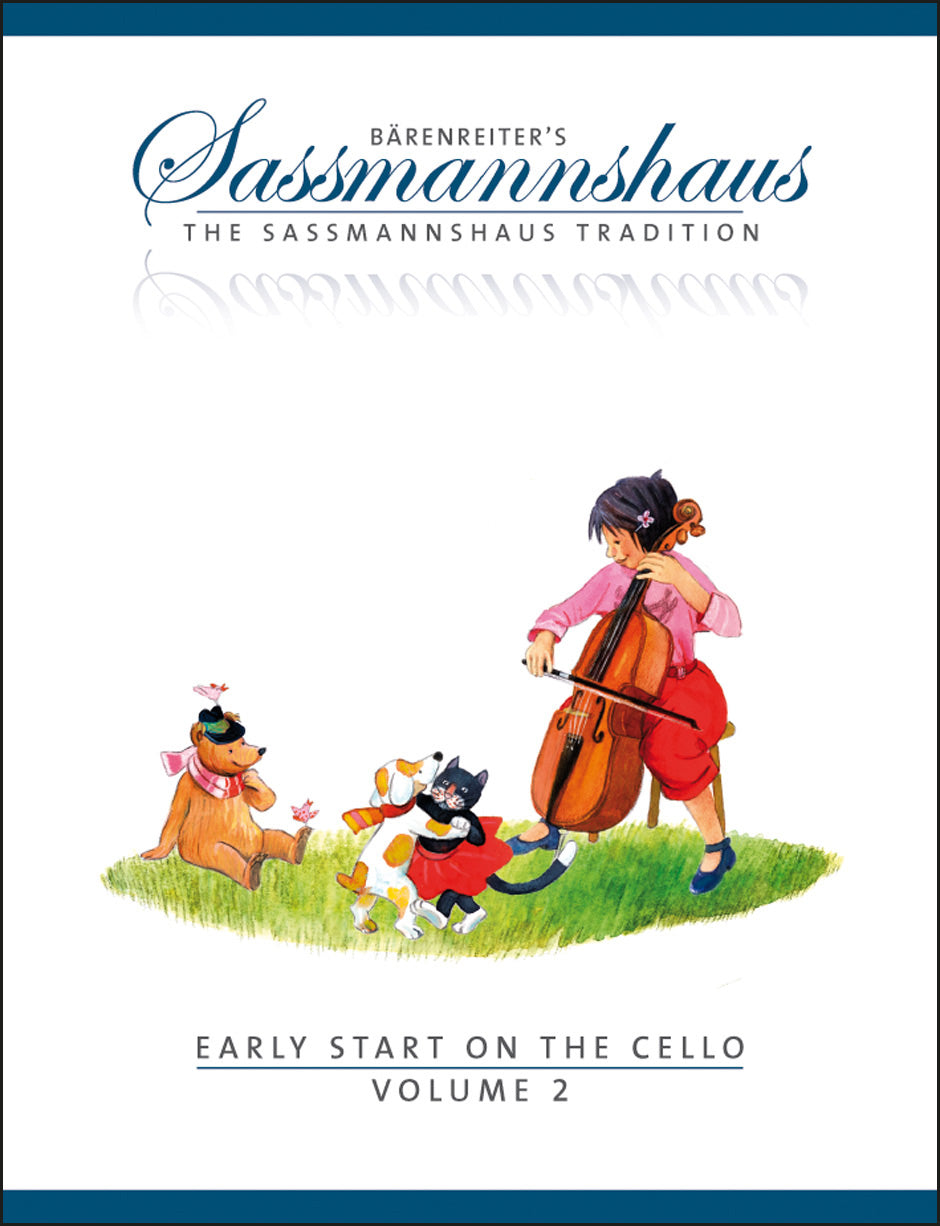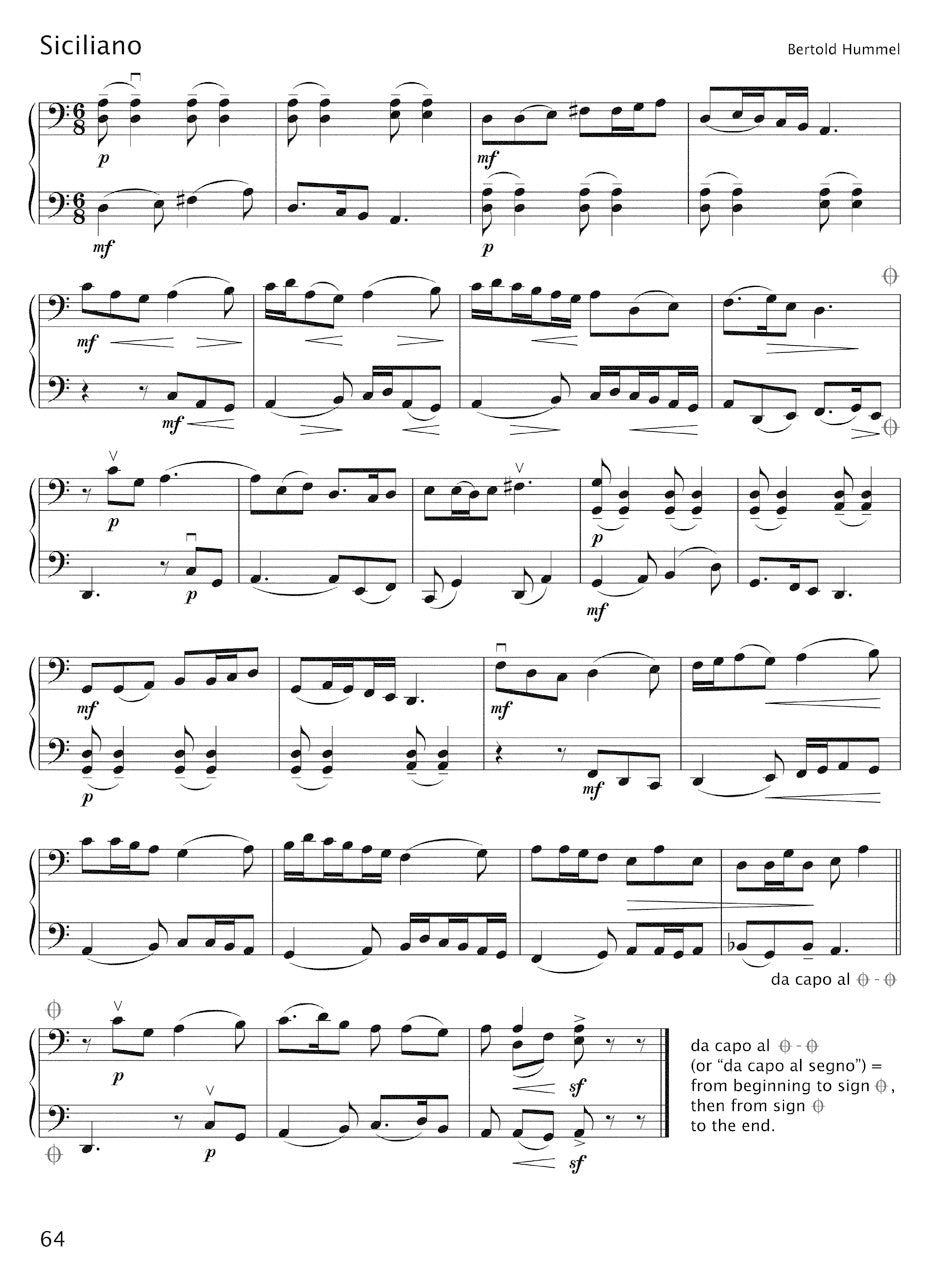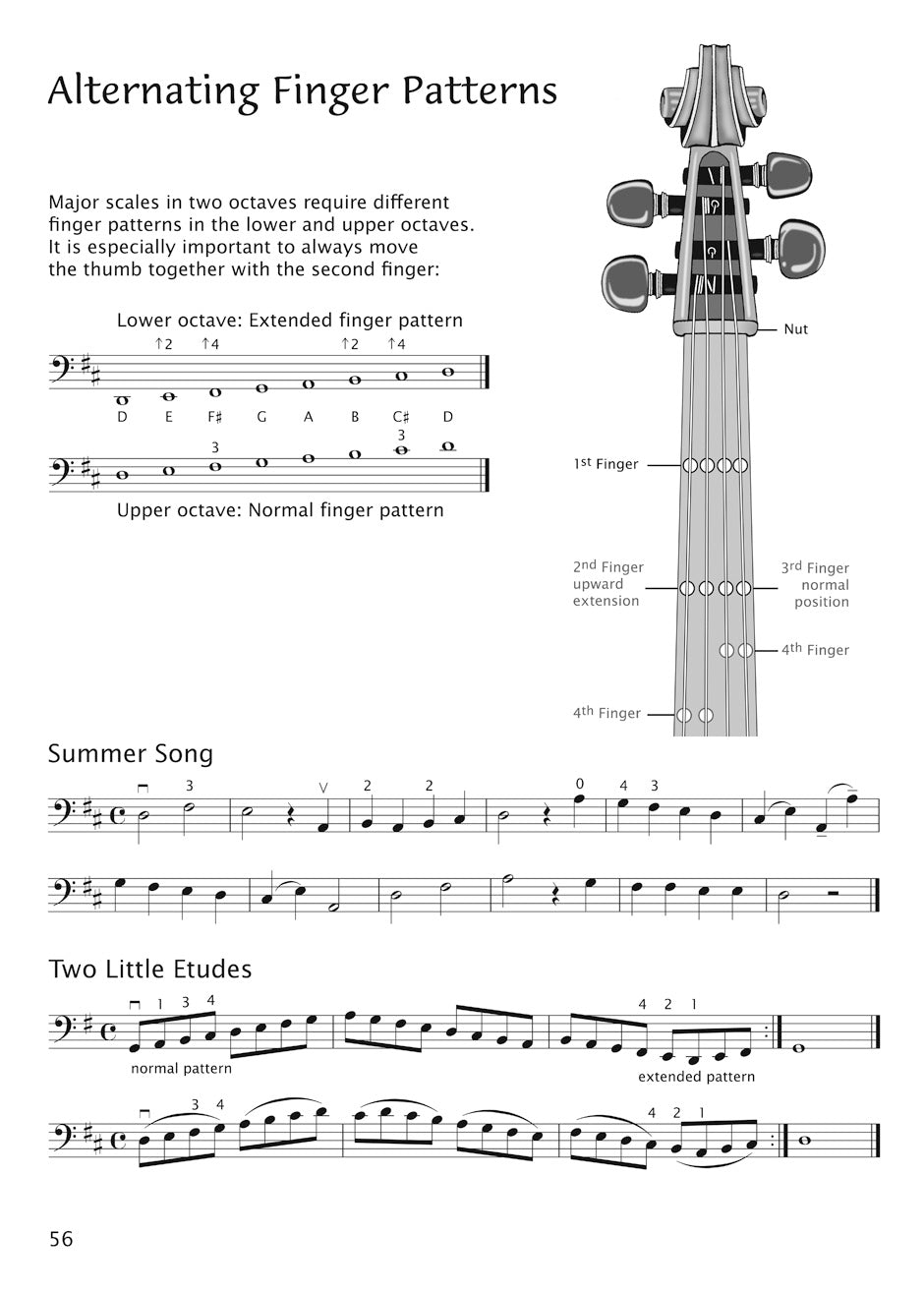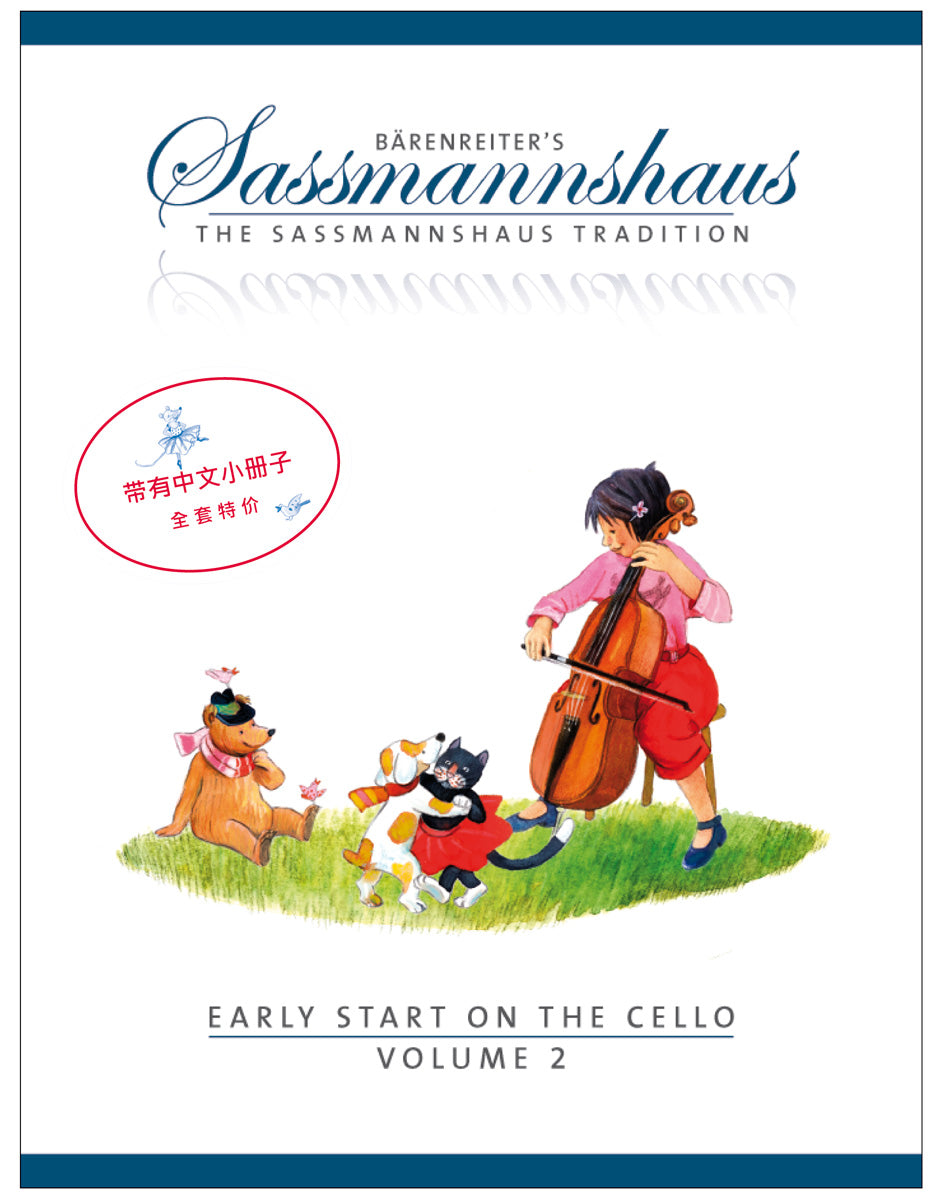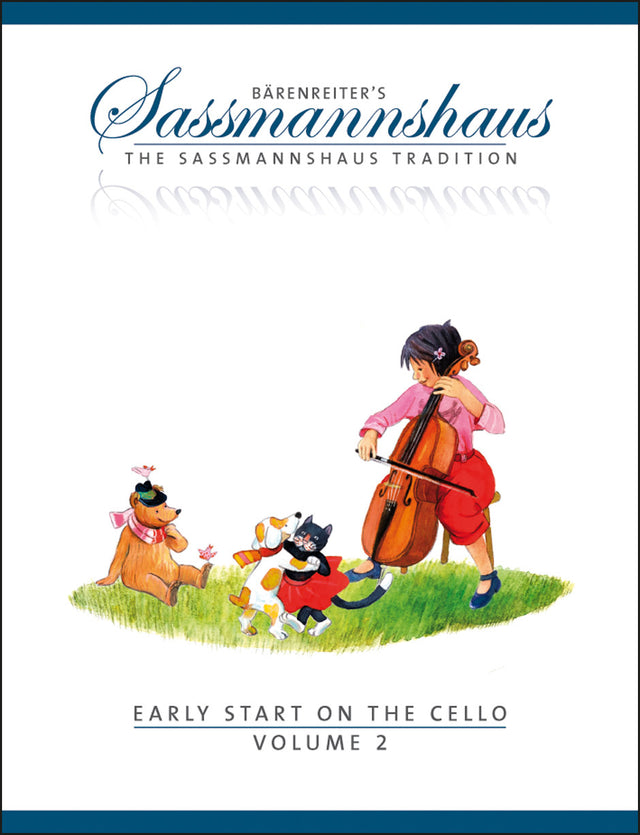Sassmannshaus: Early Start on the Cello - Volume 2
In stock and typically ships within 1 business day.
- Authors: Egon Sassmannshaus (1928-2010), Kurt Sassmannshaus
- Instrumentation: Cello
- ISMN:
- Size: 9.1 x 11.8 inches
- Pages: 64
Description
Volume 2 in our series, with colour illustrations and easy-to-read fingering charts, is designed to expand the technique of the left and right hands and above all to introduce playing in other keys. in addition to nursery rhymes and folk songs, it contains classical recital pieces for two cellos to help learners improve their ability to read music and to prepare them for ensemble playing. The second finger is included, and students become acquainted with and receive training in dotted notes, 16th notes (semiquavers), first double stops, the extended finger pattern and alternating between normal and extended finger patterns. Depending on the pupil's level of achievement - Volume 3 of the cello tutor can be used in parallel. It is subdivided by finger patterns and key and provides easily locatable sections with additional practice material.
The authors In 1976 Egon Sassmannshaus, one of the most experienced and renowned violin teachers in Germany, published his tutor "Früher Anfang auf dem Cello". This standard work for young string players quickly became the most popular and best-selling tutor in the German-speaking countries for beginners on this instrument. His son-in-law Michael Corssen, the co-author of Volumes 3 and 4, is a baroque cellist and conductor who heads a music school in the German state of North Rhine-Westphalia. Egon Sassmannshaus's son, Kurt Sassmannshaus, functioned as co-editor of the English-language edition, "Early Start on the Cello" (BA 8996, BA 8997, BA 8998, BA 8999), adapting his father's successful tutor to meet the needs and requirements of English-speaking children.
The combined knowledge and experience of the Sassmannshaus/Corssen family make these four volumes the most thoroughly researched and thought-through cello tutor for beginners all over the world.
Publishers use a lot of words to describe what they sell, and we know it can be confusing. We've tried to be as clear as possible to make sure you get exactly what you are looking for. Below are descriptions of the terms that we use to describe the various formats that music often comes in.
Choral Score
A score for vocalists that only contains the vocal lines. The instrumental parts are not there for reference. Generally, cheaper than a vocal score and requires multiple copies for purchase.
Facsimile
Reproductions of the original hand-written scores from the composer.
Full Score
For ensemble music, this indicates that the edition contains all parts on a single system (there are not separate parts for each player). In larger ensembles, this is for the conductor.
Hardcover
Hardbound. Generally either linen-covered or half-leather.
Orchestral Parts
Similar to a wind set, this is a collection of parts. In the case of strings, the numbers listed are the number of copies included, though generally these are available individually (often with minimum quantities required).
Paperback
When publishers offer multiple bindings (e.g. hardcover) or study scores, this is the "standard" version. If you're planning to play the music, this is probably what you want.
Performance / Playing Score
A score of the music containing all parts on one system, intended for players to share. There are not separate parts for each player.
Set of Parts
For ensemble music, this indicates that there are separate individual parts for each player.
Solo Part with Piano Reduction
For solo pieces with orchestra, this is a version that contains a piano reduction of the orchestra parts. For piano pieces, two copies are typically needed for performance.
Study Score
A small (think choral size) copy of the complete score meant for studying, and not playing. They make great add-ons when learning concertos and small chamber works.
Vocal Score
A score prepared for vocalists that includes the piano/organ part or a reduction of the instrumental parts.
Wind Set
For orchestral music, this is a collection of wind and percussion parts. The specific quantities of each instrument are notated.
With Audio
In addition to the printed music, the edition contains recordings of the pieces. This may be an included CD, or access to files on the internet.
With / Without Fingering (Markings)
Some publishers prepare two copies - a pure Urtext edition that includes no fingering (or bowing) suggestions and a lightly edited version that includes a minimal number of editorial markings.

